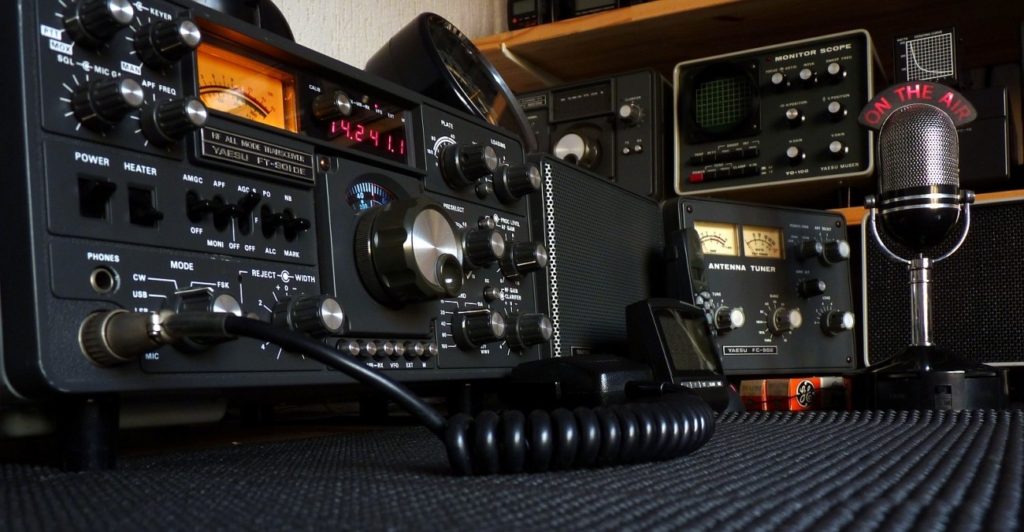Amateur Radio is a fun, technical hobby for all ages.
What is Amateur Radio?
Amateur Radio is a technical, social and rewarding hobby.
The purpose of Amateur Radio is largely self-education and technical experimentation, and through the medium of radio communications, many operators around the world form long-term friendships fostering international good will.
Amateur Radio offers:
- self-education in electronics and radio theory
- construction of equipment & antennas
- radio sport: contesting and awards
- digital modes
- world-wide (DX) contacts
- satellite communication
- send & receive pictures & video via radio
- outdoor activities – radio contacts from mountain summits and parks
- connecting radios to the internet
… and much more…
There has been a resurgence in Amateur Radio participation due to simplified licencing conditions, the availability of low-cost radio equipment and no minimum age requirement.
This has provided a new opportunity for primary school students, even as young as nine, who have successfully obtained their own Amateur Radio Foundation callsign.
Amateur Radio is an interesting and rewarding hobby for all age groups.
Joe Walsh, guitarist from The Eagles, is an amateur radio operator
Do I need a licence?
No. The Australian Communications and Media Authority (ACMA) has established a class licence for Amateur Radio in Australia. Under the class licence arrangements, individuals don’t hold a licence personally, however they must hold a Certificate of Recognition from the ACMA authorising them to use Amateur Radio frequencies. Amateurs must also use a callsign allocated to them by the ACMA.
The Certificate of Recognition authorises operation at three classes or grades of the Amateur Class Licence:
Foundation: This offers an entry level to the hobby, allowing you to operate on a selection of radio frequencies at low transmit power. Almost anyone can obtain this class by attending a short weekend course.
Standard: This mid-level offers additional privileges, allowing you to operate with more power and on extra bands. This class requires more study and knowledge.
Advanced: the complete access level to all that Amateur Radio has to offer. This level offers access to all bands, modes, and higher power. It requires a greater understanding of radio & electronics.
To obtain a Certificate of Recognition you need to sit an exam covering radio & electronics, radio regulations and a practical test. Each certificate level has its own exam and, depending on your background, the effort required to study and pass the exams will vary.
Some radio clubs offer courses, and there are two large training organisations:
- Ham College in Perth
- Radio & Electronics School (online).
Once you have completed your study you sit the tests which are administered by the Australian Communications and Media Authority (ACMA).
On successfully passing your exams you apply to the ACMA for a Certificate of Recognition and a callsign. Your certificate and callsign will be issued by the ACMA.
Is it expensive to get into Amateur Radio?
Like so many hobbies and activities, there are some costs associated with getting started.
Attending most courses is free. Certainly, Ham College and the Radio & Electronics School offer free courses.
The recommended textbooks cost about $30
There is no cost for the exam, however the hosting club or organisation may charge a fee to help offset the hire of premises and provision of course materials, refreshments and so on.
The fee for a Certificate of Recognition is $45.20, and for a “next available” callsign it’s $30.15
(Correct at 03/2024. All Government fees are reviewed and/or adjusted at 30 June every year.)
Higher fees apply for particular callsign requests.
There is a complete schedule of fees HERE
What equipment do I need and is it expensive?
Setting a budget for Amateur Radio is like many other hobbies and sporting activities. How long is a piece of string? You can get by with basic equipment, build your own antennas and experiment with home-built equipment.
At the other end of the scale, some radio amateurs spend many thousands of dollars on the latest commercial transceivers, big towers, and antennas.
Depending on your interests, as a start you will need:
- a basic HF radio
- feedline and an HF antenna
- a basic VHF/UHF handheld
- a digital radio
- computer
Equipment costs will depend on what interests you most. But, as a guide, you can get started with a simple low-cost hand-held radio (to access local repeaters and even satellites) for as little as $50. A basic second-hand HF transceiver can be obtained for about $500. New HF radios start at about $900.
You can build a kit-radio from as little as $100.
You can integrate your existing computer into your radio station for radio control, logging, research, and digital modes.
Simple antennas can be built at home with equipment readily available from hardware stores.
If you are new to Amateur Radio and plan to start at the Foundation Level, and want to use HF and VHF/UHF, you should be able to get started with between $800-1500 (this is a rough guide).

In Australia, amateur radio is administered by the Australian
Communications and Media Authority (ACMA).
ACMA amateur radio information page
ACMA information on amateur operating procedures
Exams and the issue of new callsigns are managed by the ACMA
Training courses are offered by your local amateur radio club, or on line at the Radio and Electronic School
If you are in Perth, Ham College have been providing training since 2007.
We have a guidebook for newcomers – click here: https://vkradioamateurs.org/welcome-to-ar-guidebook-for-newcomers/